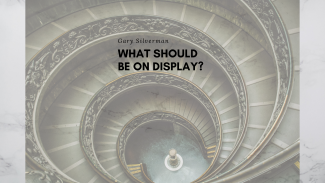
What should be on display?
By Gary Silverman, CFP®
Gary, having entered his 65th year of life has had many disjointed subjects on his mind in the many decades he’s been writing about money. This is one of those thoughts. It has nothing to do with money.
One of my favorite trips is to Washington, D.C. to visit the wide variety of museums there. You can begin at the first opening and end at the latest close and you couldn’t visit all of them in a day. That’s even if you just pop your head into each museum for a second. I know, I’ve tried.
I’d like to say that I like learning. It might be that I like forgetting. I’ve spent literally thousands of hours in museums and I’m really sure what I remember from them wouldn’t take me more than a day to explain. Still, I go because even though I tend to forget most of what I read, see, hear, and experience, I still do like to learn.
On a couple of occasions, I saw the mummified remains from some prehistoric burial site or the more opulent settings of a Pharoah’s last home. Things like that are a natural draw and can even result in traveling shows at the finest institutions.
Lately, several Native American groups are asking for the remains of their ancestors back, and it’s got me thinking. After all, how would I like it if my granddad was dug up and put on display at our local history museum?
Some will say that while it may be criminal (or at least a bit rude) to do that to granddad, ancient graves are fair game. If that’s the case, please let me know how long I need to wait to dig you up for it to be ancient enough.
In most societies, one of the most sacred and ceremonial times is the returning of a person’s body back to nature. Doing this in a way contrary to norms is usually an act of humiliation and disgrace. With so much culture revolving around the disposal of the deceased, it is an important part of historical and anthropological study.
I’m not sure that study requires a body to be put on display for all to see, at least not without the permission of the person, their family, or their community. While “lying in state” is a tradition of honor, we tend to return to the ground in ashes, bury, or entomb away from prying eyes after the ceremony—Vladimir Lenin being an exception that proves the rule.
But to think that a person, and the artifacts they are buried with, are fair game as long as no one is left alive to care…that’s becoming problematic for me. Maybe it’s because I’m a lot closer to death than to birth, or maybe age just gets you thinking about these things—I’m not sure.
By the way, y’all have my permission to skip the museum and drop my body off at the nearest medical school for the students to practice on (I do ask you to make sure I’m dead first).
Gary Silverman, CFP® is the founder of Personal Money Planning, LLC, a Wichita Falls retirement planning and investment management firm and author of Real World Investing.

